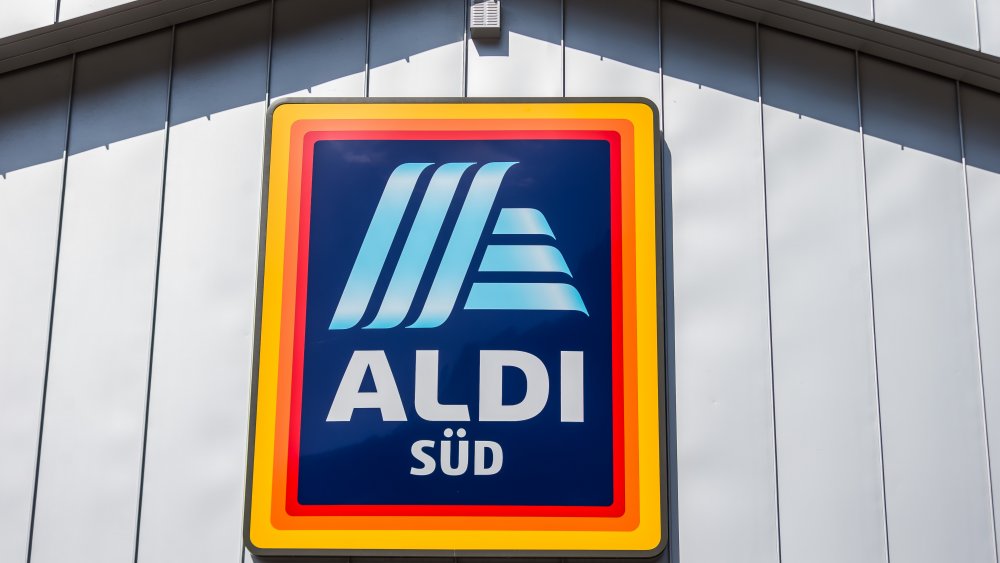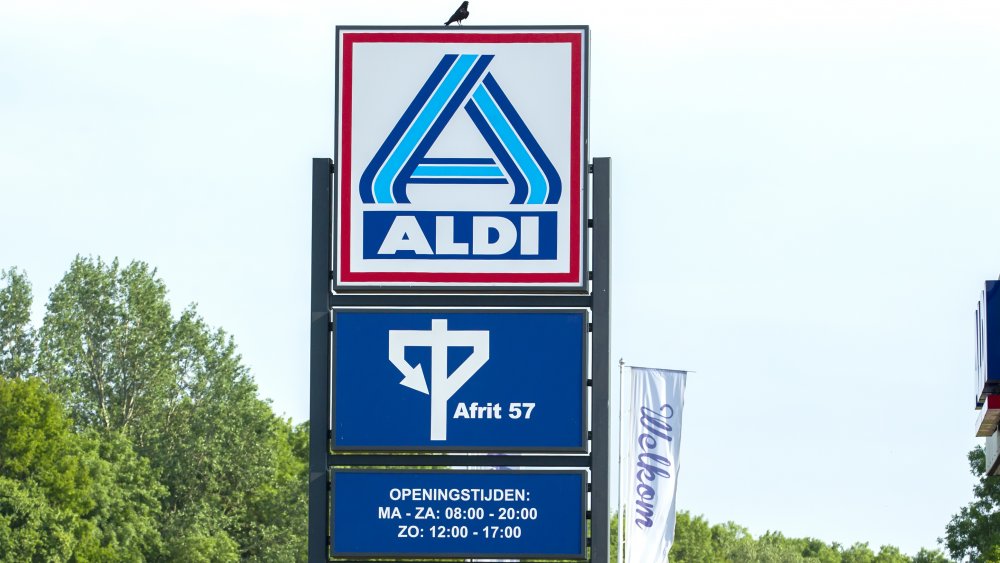The Real Difference Between The Two Different Aldis
There's an invisible line that cuts through the heart of Germany, but the line isn't political, nor is it geographic — it's strictly business, and it involves a division between two branches of what was once the same business. The two halves of the previous whole are known as Aldi Sud and Aldi Nord. Everyone who shops at Aldi in Europe is likely familiar with this line because it even has a name: the Aldi Equator (via The Chronicle).
It wasn't always this way. Aldi began as a small village shop in a German suburb headed by two brothers — Karl and Theo Albrecht (via CNBC). That business was an inheritance from their mother, who had opened the store in 1913, and the brothers took over after the war in 1946, when they had fought for Nazi Germany. The brothers were frugal — they didn't spend on advertising or decorations, and their austere business practices allowed them to grow quickly and to open four more stores around the city of Essen, where they were based, by 1948. By that time, the growing chain had been christened "Albrecht" (via S4RB).
The family business hit a small snag in the 1960s
The Albrecht brothers' shops worked because they fit a niche in post-war Germany. While other stores asked customers to collect stamps so they could get a 3 percent tax refund, the brothers opted to subtract the tax before the sale. They kept their stores small, and only stocked the most popular items so they could keep costs low — and their prices low, too. By the 1960s, the brothers had built the family brand up to the tune of 300 stores. In 1962, they changed the name of the business to Aldi (Al for Albrecht, and Di for discount or "diskont" in German).
The brothers worked side by side until 1962, when Theo and Karl Albrecht couldn't agree on whether or not their stores should sell cigarettes. The company eventually legally split into Aldi Nord and Aldi Sud in 1966. Theo ran the stores north of the Aldi Equator, which by then were called Aldi Nord, while Karl ran Aldi Sud, or stores located in the south. The brothers also chose to divide the world, so that Aldi Australia, UK, and China are Aldi Sud; Aldi France, Denmark, and Poland are Aldi Nord. Both Aldis coexist peacefully here in the U.S., though — Aldi is actually operated by Aldi Sud, while Aldi Nord purchased Trader Joe's in the late 1970s.

